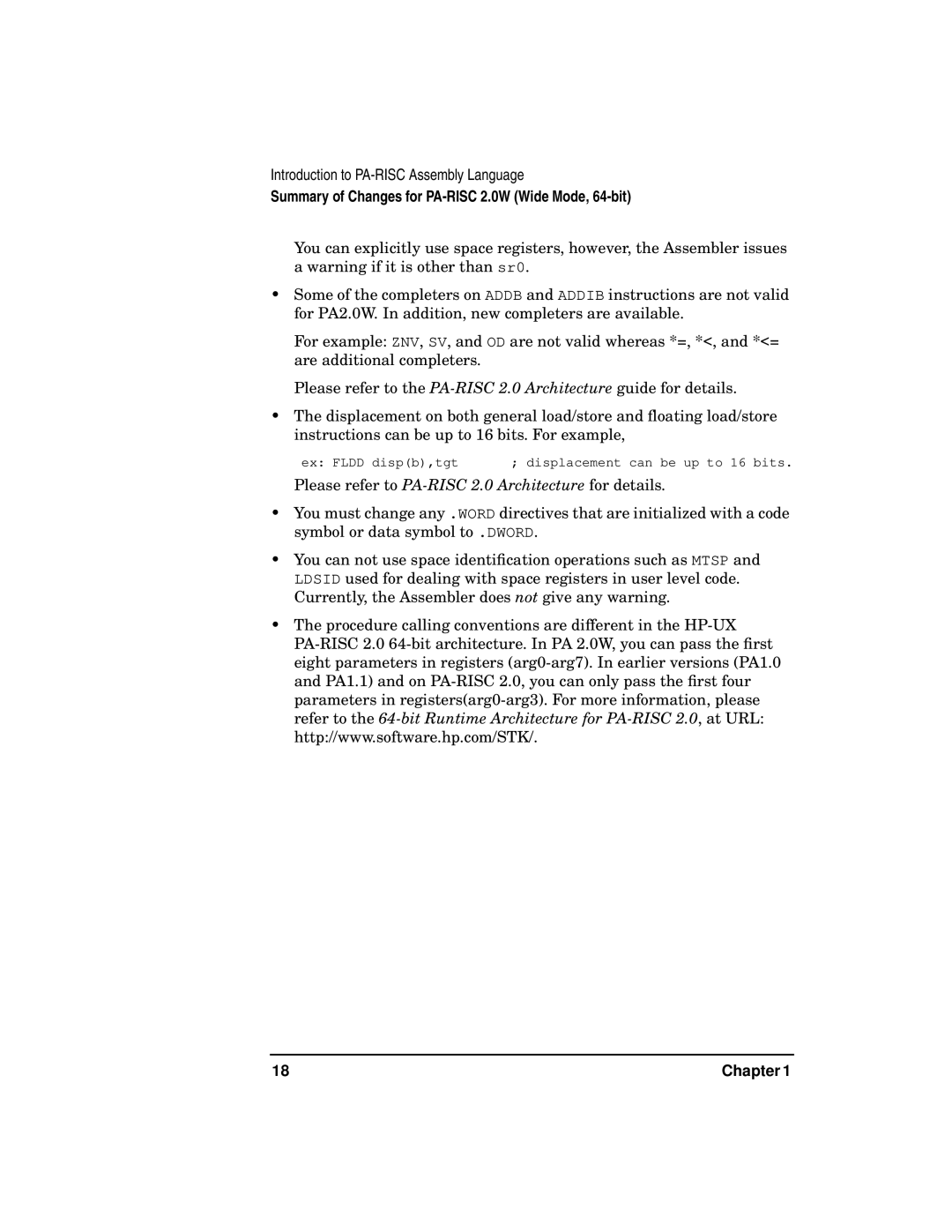Introduction to
Summary of Changes for PA-RISC 2.0W (Wide Mode, 64-bit)
You can explicitly use space registers, however, the Assembler issues a warning if it is other than sr0.
•Some of the completers on ADDB and ADDIB instructions are not valid for PA2.0W. In addition, new completers are available.
For example: ZNV, SV, and OD are not valid whereas *=, *<, and *<= are additional completers.
Please refer to the
•The displacement on both general load/store and floating load/store instructions can be up to 16 bits. For example,
ex: FLDD disp(b),tgt | ; displacement can be up to 16 bits. |
Please refer to
•You must change any .WORD directives that are initialized with a code symbol or data symbol to .DWORD.
•You can not use space identification operations such as MTSP and LDSID used for dealing with space registers in user level code. Currently, the Assembler does not give any warning.
•The procedure calling conventions are different in the
18 | Chapter 1 |
